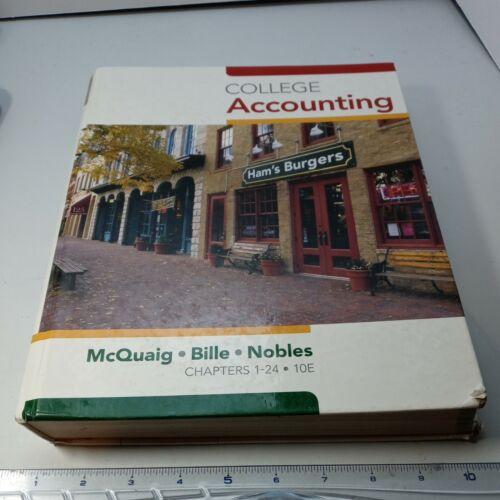Question
The following transactions were completed by The Irvine Company during the current fiscal year ended December 31: Feb. 8 Received 45% of the $18,700 balance
The following transactions were completed by The Irvine Company during the current fiscal year ended December 31:
| Feb. 8 | Received 45% of the $18,700 balance owed by DeCoy Co., a bankrupt business, and wrote off the remainder as uncollectible. |
| May 27 | Reinstated the account of Seth Nelsen, which had been written off in the preceding year as uncollectible. Journalized the receipt of $7,270 cash in full payment of Seths account. |
| Aug. 13 | Wrote off the $6,360 balance owed by Kat Tracks Co., which has no assets. |
| Oct. 31 | Reinstated the account of Crawford Co., which had been written off in the preceding year as uncollectible. Journalized the receipt of $3,975 cash in full payment of the account. |
| Dec. 31 | Wrote off the following accounts as uncollectible (compound entry): Newbauer Co., $7,265; Bonneville Co., $5,595; Crow Distributors, $9,305; Fiber Optics, $1,150. |
| Dec. 31 | Based on an analysis of the $1,759,500 of accounts receivable, it was estimated that $35,190 will be uncollectible. Journalized the adjusting entry. |
| Required: | |||||||
| 1. | Record the January 1 credit balance of $25,685 in a T account for Allowance for Doubtful Accounts. | ||||||
| 2. |
| ||||||
| 3. | Determine the expected net realizable value of the accounts receivable as of December 31 (after all of the adjustments and the adjusting entry). | ||||||
| 4. | Assuming that instead of basing the provision for uncollectible accounts on an analysis of receivables, the adjusting entry on December 31 had been based on an estimated expense of of 1% of the net sales of $17,710,000 for the year, determine the following:
|
| CHART OF ACCOUNTS | ||||||||||||||||||||||||||||||||||||||||||||||||||||||||||||||||||
| The Irvine Company | ||||||||||||||||||||||||||||||||||||||||||||||||||||||||||||||||||
| General Ledger | ||||||||||||||||||||||||||||||||||||||||||||||||||||||||||||||||||
| ||||||||||||||||||||||||||||||||||||||||||||||||||||||||||||||||||
| 1. | Record the January 1 credit balance of $25,685 in a T account for Allowance for Doubtful Accounts. | ||
| 2. |
|
| Allowance for Doubtful Accounts | |||
| Jan. 1 Balance | |||
| Dec. 31 Adj. Balance | |||
| Bad Debt Expense | |||
2. A. Journalize the transactions. For the December 31 adjusting entry, assume the $1,759,500 balance in accounts receivable reflects the adjustments made during the year. Refer to the chart of accounts for a listing of the account titles the company uses.
PAGE 10
JOURNAL
| DATE | DESCRIPTION | POST. REF. | DEBIT | CREDIT | |
|---|---|---|---|---|---|
| 1 |
| ||||
| 2 |
| ||||
| 3 |
| ||||
| 4 |
| ||||
| 5 |
| ||||
| 6 |
| ||||
| 7 |
| ||||
| 8 |
| ||||
| 9 |
| ||||
| 10 |
| ||||
| 11 |
| ||||
| 12 |
| ||||
| 13 |
| ||||
| 14 |
| ||||
| 15 |
| ||||
| 16 |
| ||||
| 17 |
| ||||
| 18 |
| ||||
| 19 |
| ||||
| 20 |
|
3. Determine the expected net realizable value of the accounts receivable as of December 31 (after all of the adjustments and the adjusting entry).
$
4. Assuming that instead of basing the provision for uncollectible accounts on an analysis of receivables, the adjusting entry on December 31 had been based on an estimated expense of of 1% of the net sales of $17,710,000 for the year, determine the following:
A. Bad debt expense for the year. $
B. Balance in the allowance account after the adjustment of December 31. $
C. Expected net realizable value of the accounts receivable as of December 31. $
Step by Step Solution
There are 3 Steps involved in it
Step: 1

Get Instant Access to Expert-Tailored Solutions
See step-by-step solutions with expert insights and AI powered tools for academic success
Step: 2

Step: 3

Ace Your Homework with AI
Get the answers you need in no time with our AI-driven, step-by-step assistance
Get Started


